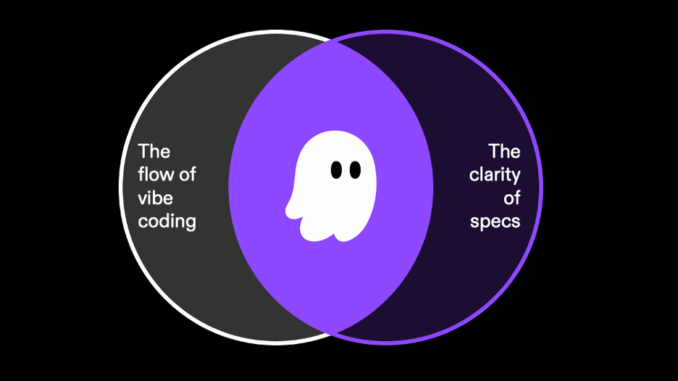
Amazon has unveiled Kiro, a groundbreaking agentic Integrated Development Environment (IDE) designed to change the way developers build, ship, and maintain software. Positioned well beyond the capabilities of today’s AI coding assistants, Kiro brings a mature, structured approach to software delivery—offering innovations in specification-driven development, intelligent automation, and adaptive user interfaces. Here’s an in-depth look at what sets Kiro apart and how it aims to transform development from the first line of code to production deployment.
A New Paradigm: From Vibe Coding to Viable Code
Traditional AI tools for developers often revolve around “vibe coding”—quickly generating and tweaking code via chat prompts. While fast, this approach struggles to deliver production-grade software. The resulting code typically lacks formalized requirements, proper documentation, and robust design, leading to increased maintenance burden and technical debt as projects scale.
Kiro’s architecture is built around bridging this gap. It’s engineered to take developers all the way from initial prototype to a polished, production-ready system, using a set of features that inject discipline and automation without impeding creativity.
Key Innovation 1: Spec-Driven Development
At the heart of Kiro lies a powerful “spec-driven development” workflow. Rather than jumping straight from a prompt to working code, Kiro encourages developers to articulate intent using natural language specifications and architecture diagrams.
How It Works
Natural Language Specs: Developers begin by describing features in plain English—e.g., “Add a review system for products.” Kiro transforms this prompt into a requirements doc, complete with user stories, edge case coverage using EARS (Easy Approach to Requirements Syntax), and acceptance criteria.
Automated Technical Design: From the approved spec, Kiro generates design artifacts: data flow diagrams, interface definitions, database schemas, and API endpoints. This clarifies complex system interactions and supports scalability.
Task Sequencing: The IDE breaks down features into subtasks, sequenced by dependencies, and linked to implementation requirements. Each task includes details to ensure end-to-end completeness, from unit and integration testing to accessibility and mobile support.
The Impact: By formalizing requirements upfront and maintaining “living” specifications that update as code evolves, Kiro minimizes ambiguity, reduces rework, and accelerates iteration—leading to higher-quality outcomes with fewer development cycles.
Key Innovation 2: Intelligent Agent Hooks
Developers often spend inordinate amounts of time on “critical, yet tedious” tasks: updating documentation, refactoring code for performance, and writing comprehensive tests. Kiro tackles this with its intelligent Agent Hooks system.
What Are Agent Hooks?
Background Automation: Hooks monitor events in the IDE—such as file saves, commits, or test runs. Triggered automatically, they launch AI agents to perform actions like:
Generating or updating documentation
Running test suites and analyzing coverage
Executing security or code quality checks
Refactoring for performance
Intelligent Review: Hooks act like an expert developer constantly reviewing changes, catching common mistakes, and ensuring best practices—without the need for manual intervention every time.
Consistency & Productivity: By reducing manual overhead and standardizing repetitive workflows, Agent Hooks increase velocity while ensuring that codebases remain healthy and well-documented throughout their lifecycle.
Example: Dragging a new image into the assets folder can automatically update index files, while deleting files prompts cleanup of obsolete references—all managed by customizable hooks.
Key Innovation 3: A Purpose-Built, Adaptive Interface
Kiro’s interface is meticulously crafted to support a diverse spectrum of developer workflows, whether rooted in chat-driven prototyping or traditional spec-based engineering.
Standout Features
Versatile Editor: Combines advanced code editing (syntax highlighting, multi-tab support, error indicators) with seamless AI integration.
Dedicated Chat Panel: Enables conversational coding—ask questions, request code snippets, debug, and optimize through AI-powered chat.
Specs & MCP Integration: Developers access spec management, Agent Hooks, and MCP (Model Context Protocol) servers—bridging local projects with external documentation, APIs, or data sources.
Customizable Workflow: Use the command palette, task views, or steer agent behavior via “steering files” for project-specific intelligence.
Control & Transparency: All AI interventions are visible, auditable, and reversible, ensuring developers remain firmly in command.
Going Beyond the Prototype
Most AI coding tools excel at rapid prototyping. Kiro’s distinct advantage is its ability to mature those prototypes into production-ready systems—embedding specifications, automated testing, architectural rigor, and comprehensive documentation as first-class citizens of the development process.
With “vibe coding” as a starting point, Kiro takes engineers further, ensuring that the path to production is not only faster, but more disciplined and sustainable in the long run.
Practical Accessibility, Broad Language Support
As of launch, Kiro is available in a free public preview with support for all major programming languages. Developers can get started in minutes, while enterprise teams will benefit from security features and scalable workflow automation as the platform evolves.
Conclusion
Amazon’s Kiro represents a significant leap forward in the quest to modernize software delivery. By fusing spec-driven development, autonomous intelligent automation, and adaptive UI, Kiro delivers the structure, transparency, and flexibility today’s teams need. For developers eager to spend less time on boilerplate and more time innovating, Kiro provides a clear pathway from initial spark to fully realized, production-grade solutions.
Check out the Technical details. All credit for this research goes to the researchers of this project. Ready to connect with 1 Million+ AI Devs/Engineers/Researchers? See how NVIDIA, LG AI Research, and top AI companies leverage MarkTechPost to reach their target audience [Learn More]
Nikhil is an intern consultant at Marktechpost. He is pursuing an integrated dual degree in Materials at the Indian Institute of Technology, Kharagpur. Nikhil is an AI/ML enthusiast who is always researching applications in fields like biomaterials and biomedical science. With a strong background in Material Science, he is exploring new advancements and creating opportunities to contribute.
